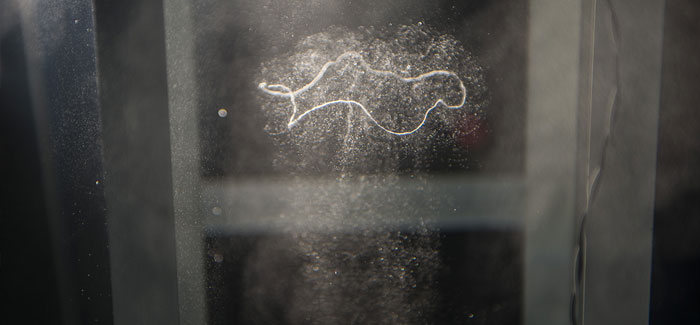
(Photography by Robert Kozloff)
Chicago physicists tie vortexes into knots.
Turning theory into practice, UChicago physicists have created the first ever knotted vortex, in this case, an underwater whirlpool configured not as a single loop, but as multiple loops linked and twisted together. It’s sort of like knotting a smoke ring.
For more than a century, knotted vortices have been thought to play a fundamental role in the sun’s turbulent plasmas, in neutron stars, and in ordinary fluids. But scientists had never before managed to create one. UChicago physicist William Irvine and physics postdoc Dustin Kleckner did it using hydrofoils—winglike structures in curled and looping and linked shapes—which they lowered into a water tank and coated with tiny air bubbles. When the scientists accelerated a hydrofoil to more than 100 g velocity and halted it at the bottom of the tank, the air bubbles were released into the water and traced the shape of the resulting vortex. The scientists filmed its movement and dissipation.
Contrary to theory, which suggests that vortex knots should be persistent, stable phenomena, Irvine and Kleckner discovered them to be dynamic and evolving. Vortex knots stretch and elongate; they circulate in opposite directions and then collide, breaking apart. They reconfigure and reconnect. Irvine and Kleckner published their findings on “these fascinating excitations of nature” in the April Nature Physics.
